

Strauss and Die Frau librettist poet Hugo von Hofmannsthal were undoubtedly the greatest opera collaborations in 20th century German opera world, producing six operas (from 1909 Elektra to 1933 Arabella) that are still widely played in opera houses around the world, particularly the first three (Elektra, Der Rosenkavalier, Ariadne auf Naxos).
For Die Frau, von Hofmannsthal envisioned a magic fairy-tale opera adapted freely from Johann Wolfgang von Goethe’s Conversations of German Emigrants and modeled after Mozart’s Die Zauberflöte. The latter’s influences were evident not only in the roles of the two pairs of lovers, but also in the central theme of love and the “tests” to prove the worthiness of both pairs.
It was important to note that although the work on Die Frau began in 1911 (following the success of Der Rosenkavalier’s premiere), the opera wasn’t performed till 1919, after the conclusion of World War I. In a rare display of both mimesis (art imitating life) and anti-mimesis, 1911 also marked the year of the royal wedding of Emperor Karl and Empress Zita (the last of Habsburg royalty) and they subsequently were banished from Austria in 1919, merely seven months before the premiere of Die Frau.
In a way, that event probably served as one of the reasons for the lukewarm reception of the premiere in Vienna, despite the participation of two of the greatest singers of the century, Maria Jeritza and Lotte Lehmann, as the Empress and Dyer’s Wife respectively. Nevertheless, the mythical Emperor and Empress of Die Frau lived on, and the opera gained significance over the years, most importantly as one of the features for the reopening of Vienna Opera House in 1955.
Die Frau ohne Schatten represented an important piece of history for San Francisco Opera, as the American premiere took place at War Memorial Opera House on September 18, 1959, with Leopold Ludwig conducting a Jean-Pierre Ponnelle production with Edith Lang, Sebastian Feiersinger, Mino Yahia, Marianne Schech and Irene Dalis as the Empress, the Emperor, Barak, Dyer’s Wife and the Nurse respectively; that magnitude of an event warranted its place in the current Centennial Season. Since then, the opera was only been presented on War Memorial stage five other times in only three different productions until now.
The year following the premiere, Ludwig with Schech and Dalis returned for the first revival of Ponnelle’s staging, this time with the great Leonie Rysanek (the first of her three runs as the Empress), Ticho Parly and Paul Schoeffler. The final revival of Ponnelle’s came 4 years later, when Ella Lee, Richard Martell, Eberhard Waechter, and Gladys Kuchta joined Ludwig and Dalis to sing the five main roles.
Twelve years later, in 1976 SF audiences saw the arrival of Karl Böhm, a close friend of Strauss and Daphne’s dedicatee (the current show perused the cuts made by him and sanctioned by Strauss), to conduct a new production by Nikolaus Lehnhoff featuring the cast of Rysanek, Matti Kastu, Walter Berry, Ursula Schröder-Feinen and Ruth Hesse.
The same production was revived four years later, with Berislav Klobucar conducting Rysanek (sharing the role with Eva Marton this time) and Hesse, plus James King, Gerd Feldhoff and Birgit Nilsson as Dyer’s Wife. In 1989 War Memorial stage saw Die Frau the last time, with Christoph von Dohnányi conducting Grischa Asagaroff production with Mary Jane Johnson, William Johns, Alfred Muff, Gwyneth Jones and Anja Silja.
The current performances marked the first time San Francisco Opera presented David Hockney’s production; it was a co-production between Los Angeles Opera and Royal Opera House Covent Garden and it had its premiere in London in 1992 (originally directed by John Cox), before traveling to Los Angeles and Australia. Longtime SF Opera staff director Roy Rallo took the helm at directing the show, while the costumes were designed by Ian Falconer, frequent Hockney collaborator who passed away last March and to whose memory the whole production was dedicated.
SF Opera press release detailed that “the story follows a fairy-tale Empress who has three days to take the shadow of a mortal woman, and thereby that woman’s ability to have children, in order to prevent a curse from turning her husband, the Emperor, to stone. While the theft of the shadow could avert the threat she faces, the Empress confronts whether her own happiness is possible if it comes at another’s expense.”
One of the most disturbing portions of the opera was the presence of the Chorus of Unborn Children – first introduced towards the end of Act 1 and significantly appeared in the Finale – which proved to be a very controversial subject in the post-Roe world. However, in the program historian Larry Wolff (who wrote extensively about the opera in his book The Shadow of the Empress: Fairy-Tale Opera and the End of the Habsburg Monarchy), offered an alternative point of view of the matter, as he said:
While the word “unborn” was appropriated in the American abortion debate in the late 20th century, it had no such meaning for Strauss and Hofmannsthal in the early 20th century. The unborn children represented, in wartime, the unborn generation of the future, what we might call “posterity.” Hofmannsthal imagined the children’s chorus sounding “as if birds were suddenly speaking from the sky,” and Strauss created magical effects with the triangle and celesta. The redemptive magic of the unborn children was intended to heal a world destroyed by war.
Even further, in his 2019 essay published by The New York Times following the 100 year anniversary of the premiere of the opera, Wolff argued that Die Frau ohne Schatten imagined an enlightened, democratic empire” and that the Empress (the title character of the opera)
…was an empress for the 20th century, an empress for the age of democracy, descending from her palatial heights to the humblest dwellings of ordinary people and learning what it means to be human, seeking to acquire a shadow as a sign of her own humanity, but ultimately realizing that she would violate the moral code of humanity if she took the shadow of another woman.
Seen in these larger contextual meanings, Die Frau ohne Schatten’s central message of self-sacrificing love and responsibility towards the present and future of humanity through action came loud and clear and it served as a necessary wake-up call for our world that is seemingly full of greed and hate.
The greatest strength of Hockney’s production as realized by Rallo was that it effectively told the complex and highly symbolic story and, by staying true to the “magic fairy-tale” as envisioned by Strauss and Hofmannsthal, it conveyed to the audience its lessons without being preachy. Decidedly whimsical in his approach, Hockney took the fairy-tale aspects seriously and saturated the stage with an explosion of bold and striking colors, emphasizing the other-worldly nature of the story, aided by brilliant lighting designed by Justin A. Partier.
The efficiency of the staging was particularly staggering, as the set mostly consisted of a single rotating semi-circular piece with one side representing the Emperor’s realm and the other constituting Barak the Dyer’s hut complete with dye pots, coupled with various dropdown props to denote trees and doors, among others. All these resulted in smooth transitions between scenes and nonstop action of the story; the whole set even felt like children’s pop-up story book at times!
Hockney, too, emphasized the link to Die Zauberflöte in his production, as the door to Keikobad’s realm and the pyramid in Act 3 could readily be reused for Die Zauberflöte, and, particularly, Falconer’s costume for the The Nurse definitely could easily be Queen of the Night’s! Speaking of the costumes, Falconer mostly assigned specific colors to each character (The Emperor in red, Barak and the Messenger in blue, the Nurse in black) throughout the opera, with the exception of two characters, The Dyer’s Wife – who traded her turquoise short-and-shirt getup for clown-like yellow and blue stripes for the beginning of Act 2 – and especially, the Empress.
It was fascinating to see the color progression of the Empress’s (from white in the Scene 1 of Act 1, blue for all the scenes in Barak’s hut, maroon for the confrontation with Keikobad, and finally bright red (matching the Emperor) for the finale); it was as if to reflect on the progression of her heart!
Ultimately, the opera revolved around choices – particularly the women’s choices – as Dyer’s Wife chose not to sell her shadow at the end of Act 2, and especially, in the Act 3 the Empress’ choice to refuse to take the shadow that marked the turning point of the opera and brought it to its joyful endings.
This production managed to bring out that aspect much more clearly than any other productions I had seen in the past. It also succeeded in giving clarity to Dyer’s Wife actions as the manifestations of her frustrations of married life.
If I might nitpick, my biggest problem with the production came at the very last scene of the opera. In the interview with Hockney printed in the program, he said:
Hofmannsthal’s libretto describes a beautiful landscape with a golden river sweeping through it. We realized the Golden River could represent the life force. But the opera doesn’t end there. It ends in the future with the voices of unborn children singing. The river then comes toward the audience to become a tree of life. I think it fits the music very well.
The Golden River was all there, but unfortunately, the so-called “tree of life” looked a little bit like “flying sperm” especially when coupled with the children chorus, making it as if Hockney was playing joke on the audience. It was truly an unfortunate moment, as the scenes leading to that moment were perfect and magical! You can decide for your own what you think from the image below.

© David Hockney
While the production value offered so much more, it was the musical aspect of the opera that lifted up the show into the stratosphere. San Francisco Opera assembled an extraordinary cast to bring the fable into life, led by former SF Opera Music Director Sir Donald Runnicles, who conducted Die Frau ohne Schatten for the first time in his career.
Swedish soprano Nina Stemme made a spellbinding turn as the Dyer’s Wife, in a performance full of power and vigor. Her round soprano voice sounded darker (as evident in Kurt Weill’s section of her recital last month, reviewed by my colleague Christian Ocier) than the last time I heard her essaying the role, giving her portrayal an earthy undertone. Her confrontation with Barak at the end of Act 2 was a stunning tour de force both in her acting and particularly in the way she rode the blazing wall of sound of the orchestra.
In contrast, she demonstrated the different facets of her interpretation of the role with heartfelt tenderness and joyful celebration in the two duets with Barak in Act 3, signifying the complete transformation of the character. After that June 4 performance, Stemme was also presented with the San Francisco Opera Medal, as recognition for her works with SF Opera in the last twenty years, starting with Senta in Der Fliegende Holländer in 2004, Brünnhilde in both 2010 and 2011 Ring cycles (all conducted by Runnicles) and the title role of 2017 Turandot (with production by Hockney).
A veteran of the role Barak, debuting Danish bass-baritone Johan Reuter brought a sense of warmth and nobility into the role, the perfect family man. His scene where he broke his mortar in Act 2 was truly heartbreaking (a perfect example of Rallo’s direction), while he and Stemme exhibited beautiful chemistry in both Act 3 duets.
As the title role of the opera (The Empress), Camilla Nylund brought an otherworldly quality to her personification of the character. With her silvery bright voice, she navigated the coloratura passages in her opening monologue in Act 1 with ease, and later on traded that with grit and determination for the confrontation with Keikobad in Act 3. Nylund’s performance here opened my eyes of the importance of the role as the central character whose transformation changed the course of the story!
Not to be outdone, British tenor David Butt Philip imbued the challenging Emperor role with intelligence and sensitivity, his beautiful voice gleamed bright throughout. While he sounded a tad lyrical in the beginning, his monologue in Act 2 proved to be highly nuanced and shapely executed. I couldn’t help but wonder if his costumes (the looped-up skirt, the big hat with feather and the weapons) somehow got in the way of his singing though.
Bay Area resident Linda Watson completed the principals with her wholesome depiction of the evil Nurse. The metallic tone of her voice infused a sense of danger and menace to her characterization, and it was highly effective. The comprimario roles (there were 20 of them!) were handled handsomely, with some highlights included tenor Zhengyi Bai and bass-baritones Wayne Tigges and Philip Skinner as Barak’s brothers (little trivia: Skinner sang the same role in the last production … 34 years ago!), Stefan Egerstrom as the Spirit Messenger and Mikayla Sager as the Keeper of the Gates.
Runnicles led the SF Opera Orchestra in a reading full of great elan and vigor. With 96 instrumentalists in the pit (the third largest ever, the record was held by 2002 Olivier Messiaen’s Saint François d’Assise with 104 people also conducted by him) Runnicles managed to achieve a great balance between clarity, details, and power.
In his hand, Act 2 was specifically absolutely thrilling, a breathless nonstop action with great buildup toward the confrontation of Barak and his wife that almost felt like it would go out of control but miraculously stay on the line. In comparison, there was a bit sense of discontinuity in the final act (probably caused by the cuts employed), but nevertheless his was still a very riveting take on the score.
This extraordinary production definitely is a major accomplishment for San Francisco Opera, a perfect crowning glory for the Centennial Season. There are only four more performances left, and you would be wise not to wait for another three decades to experience Strauss’ complex and completely human masterpiece, Die Frau ohne Schatten!
Photos: Cory Weaver/San Francisco Opera
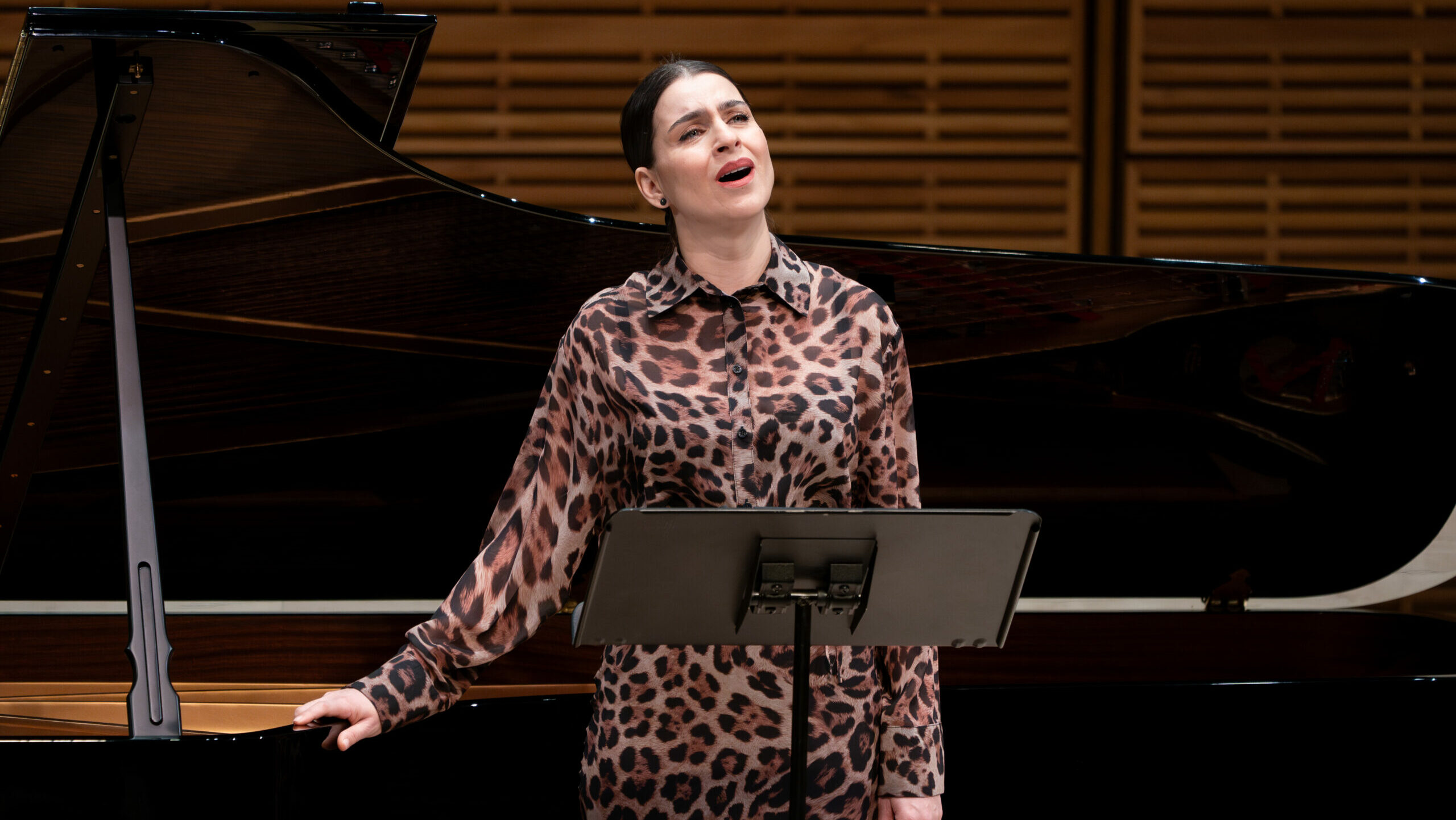
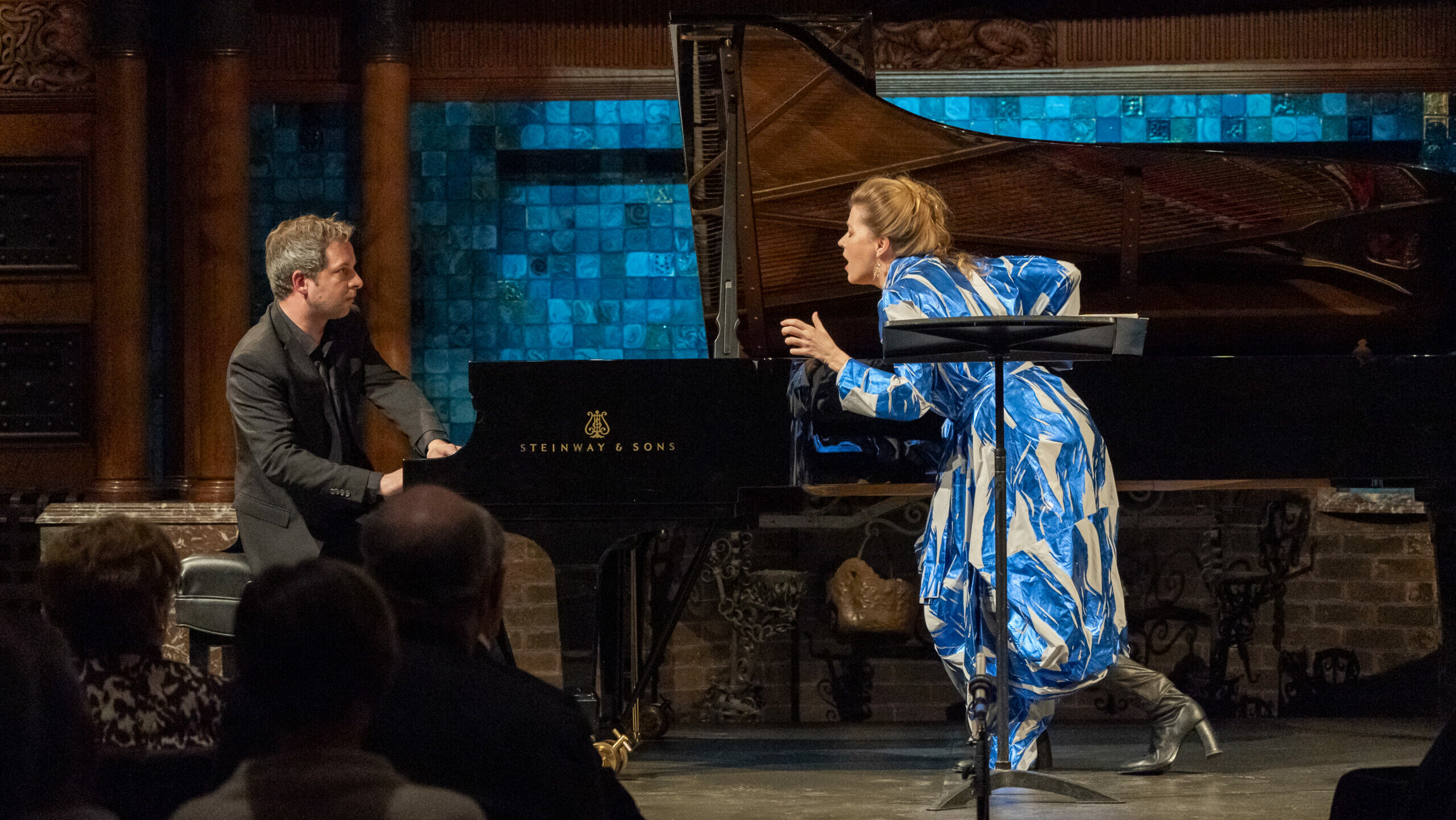







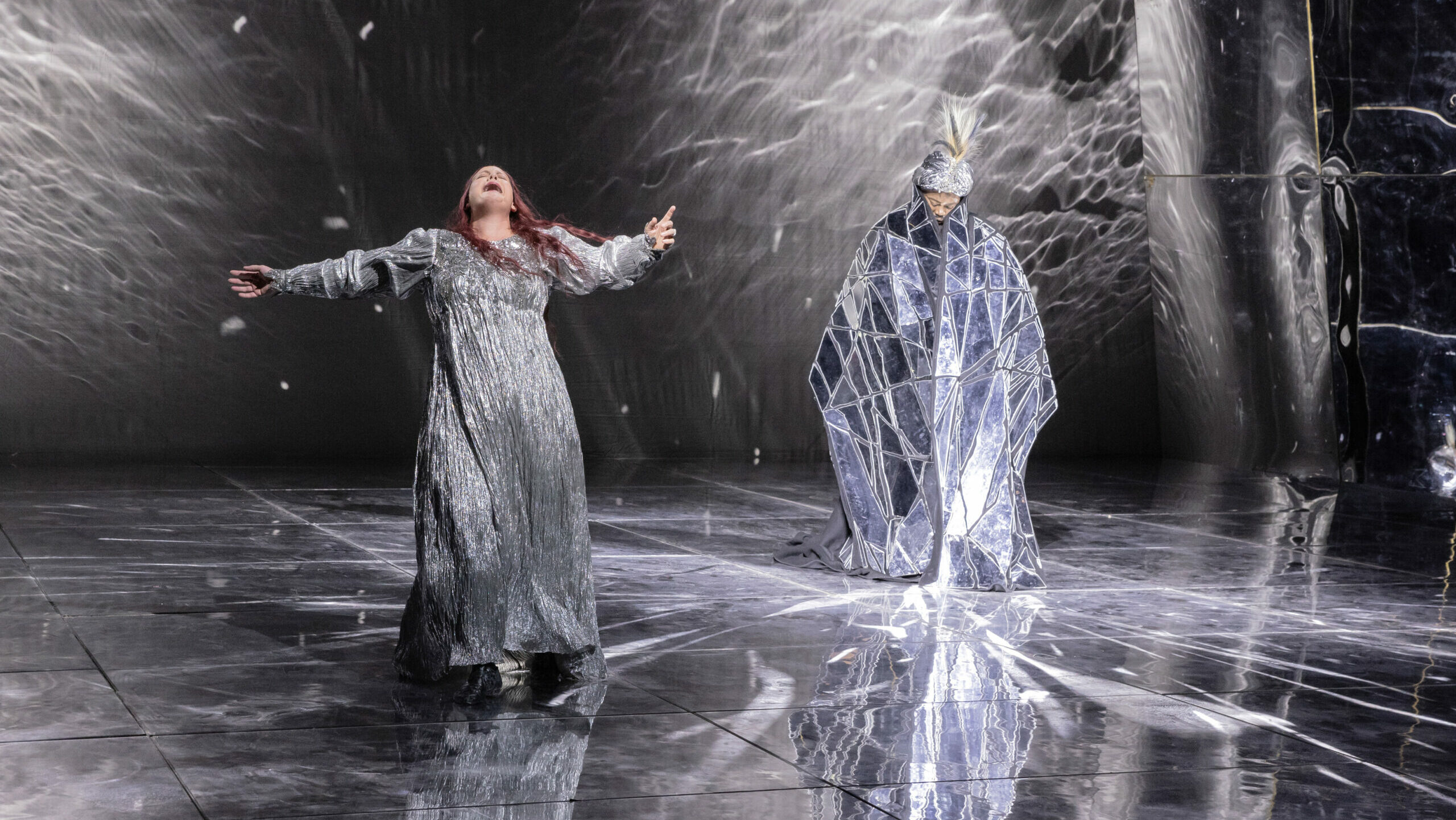






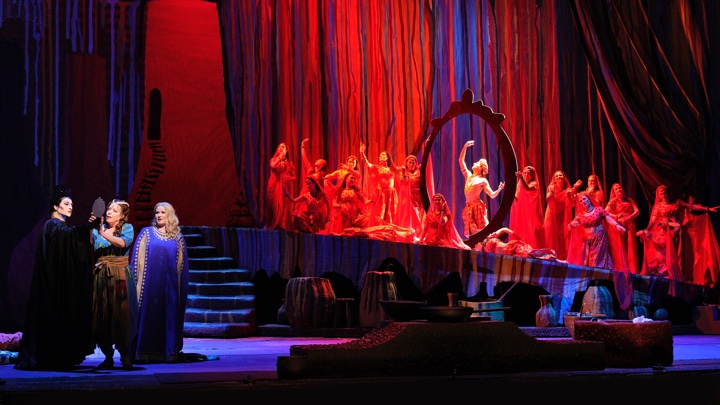
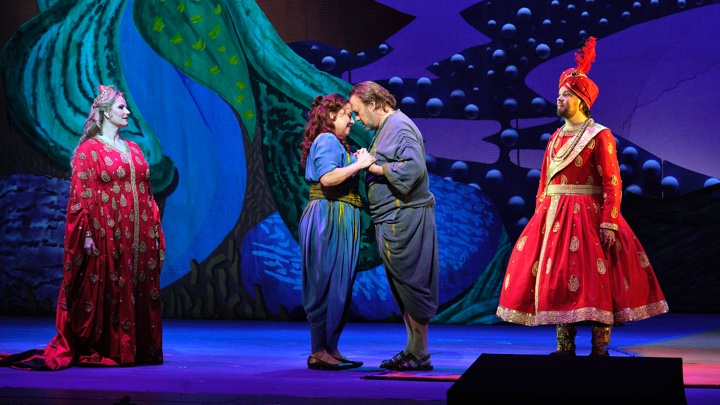











Comments